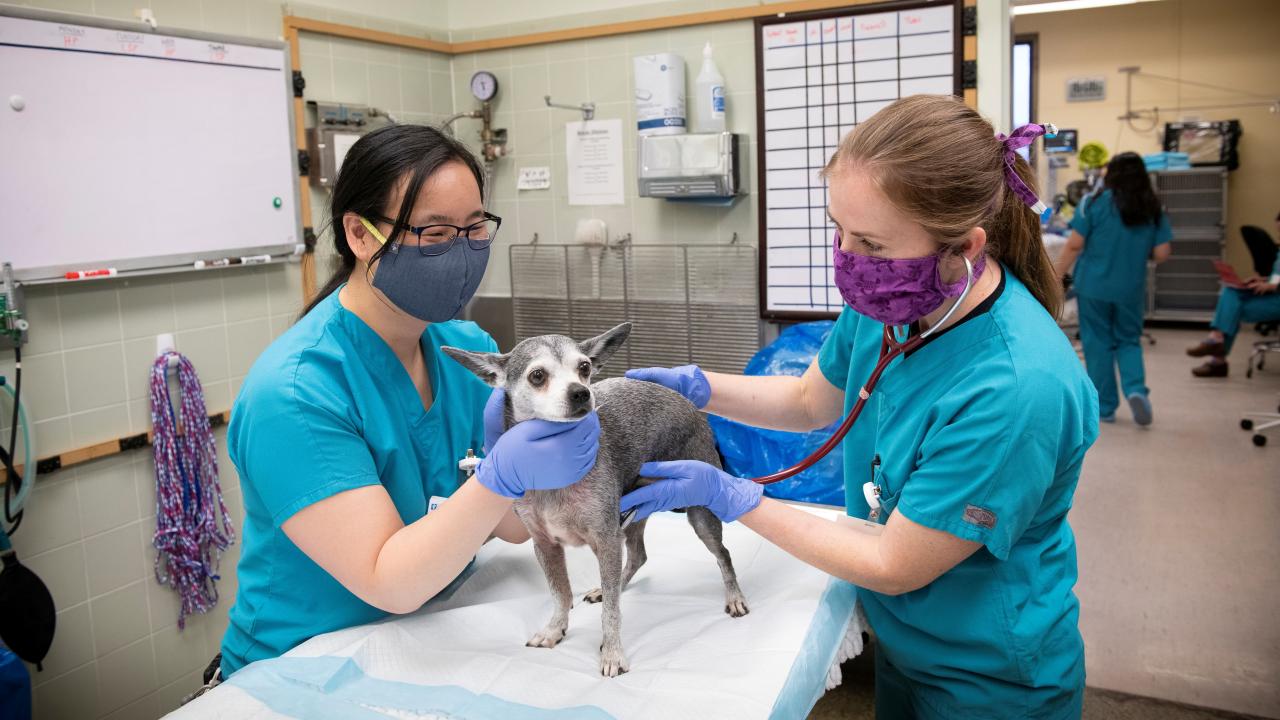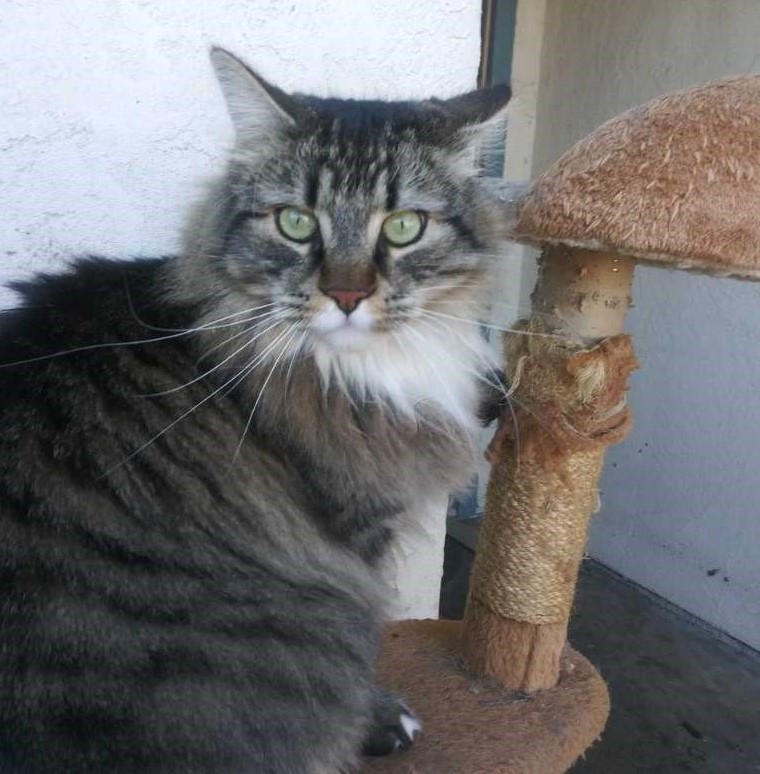
ER and Critical Care Function with High Level Despite Massive Caseload Growth
As many local veterinary clinics are unable to provide their usual levels of care due to the COVID-19 pandemic—on top of a significant caseload growth over the past decade—the UC Davis Emergency Room (ER) is seeing more patients than ever.
For the first two months of the pandemic’s shutdown of most businesses, the ER was the only UC Davis veterinary hospital service to remain fully open, and one of very few 24/7 emergency facilities in the entirety of Northern California. Specialists in other services such as imaging, surgery, and internal medicine remained on call to assist the ER as it cared for and triaged a record number of cases. By mid-May, as it became more apparent that veterinary medicine was indeed an essential community service, the hospital re-opened its 30+ specialty services.

One cat named Tiger is surely thankful that critical care specialists were there for him when he recently encountered a foxtail that migrated into his chest cavity, causing him to require surgery and a long hospitalization to recover.
Tiger, a 3-year-old Maine Coon cat, went missing for a day. When he returned, he was lethargic, in respiratory distress, and appeared to have lost a significant amount of weight in a short period of time. After diagnosing Tiger with a pyothorax (infectious fluid build-up in the chest cavity), his primary veterinarian referred him to UC Davis.
Further evaluation assisted by images taken by the Diagnostic Imaging Service—including x-rays, ultrasound, and a CT scan—revealed multiple abscesses lining his chest cavity, including the membrane surrounding his heart, most consistent with chronic infection in his chest. Surgical exploration and debridement of the abscesses was recommended.
The Soft Tissue Surgery Service performed a median sternotomy, or an incision midline through Tiger’s sternum, to access both sides of his chest. Multiple abscesses were identified, opened up, and flushed out, including the pockets around his heart. A foxtail was found on the left side of his chest and removed. To help with Tiger’s recovery, surgeons placed a feeding tube and a chest tube (to drain fluid) in him.
“A foxtail pyothorax is very unusual in cats,” said Dr. Kate Hopper, a critical care specialist and director of the Small Animal Clinic. “Unfortunately, we see them often in dogs, but it’s a rare occurrence in cats. Tiger’s family did a great job in getting him the critical care he urgently needed.”
Following immediate surgical recovery in the Intensive Care Unit (ICU) for one night, Tiger was hospitalized for an additional five nights. He is now recuperating well at home.
Admittances to the ER are up 25 percent compared to immediately before the pandemic. Historically, the ER caseload has steadily increased to more than a 160 percent difference since 2013, seeing an average of 520 cases per month in 2020 (and 860 this July alone), as compared to 200 per month in 2013.
“With many of the local veterinary clinics having reduced capacity, clients are turning to the UC Davis ER for care that cannot wait for the next available appointment at their primary care provider,” said Dr. Steven Epstein, chief of the Emergency and Critical Care Service. “Our team has risen to the challenge of providing high quality care, but we are feeling the effects of this new caseload while working in a small space.”
The hospital’s current ER has only two treatment tables. To operate at maximum efficiency and provide the most optimal teaching environment for students and house officers, an ER of its caseload should have at least four to six tables.
“This caseload increase is stretching our personnel and resources to an extreme extent,” said Dr. Karl Jandrey, associate dean of Admissions and Student Programs and a long-time member of the ER’s faculty. “Our large and diverse caseload provides a tremendous learning environment for our students and house officers, but we have to ensure those opportunities are not jeopardized by the limited footprint in which we train them.”
As part of the renovation portion of Phase I of the future Veterinary Medical Center (VMC), an expansion of the hospital’s current ER and ICU space is planned in the near future. Looking forward to the final VMC phase later in the decade, an entirely new ER and ICU will be built in the future Small Animal Hospital. In addition to more treatment tables and expanded space for rounds and other student educational activities, the future space will feature a first floor ER, readily accessible from a drive-up emergency entrance.
“This expansion is absolutely critical for the ER to continue its high standards of compassionate care,” said Dr. Hopper. “It is exceptional that our team has maintained such a highly-rated and sought-after ER under these circumstances. It says a lot about the fortitude of this team and its commitment to our patients through collaborative care and teamwork.”
# # #
